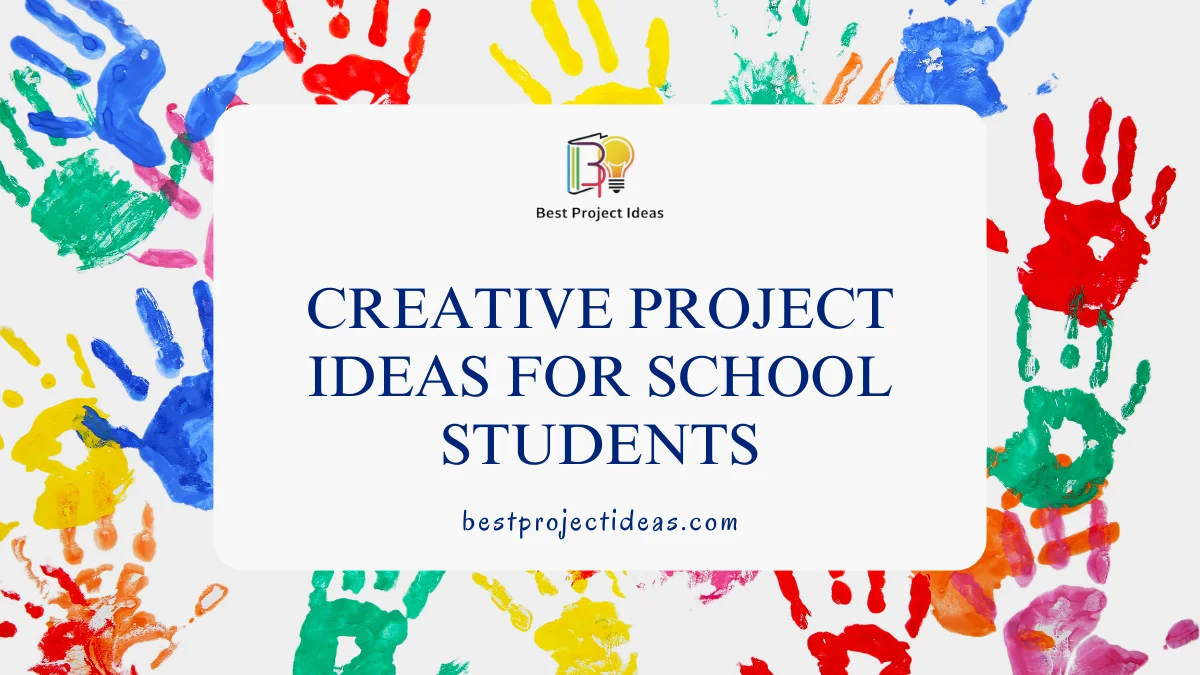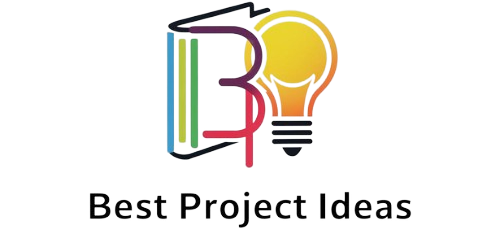
Creative Project Ideas For School Students make learning fun. These projects help kids explore what they like and learn in new ways. They make school more enjoyable by turning lessons into activities kids can do.
These ideas let kids use their imagination and think differently. They give kids a chance to try new things and show them what they can do in a fun way.
With these projects, learning becomes exciting, making school days more enjoyable. Students can enjoy learning and find out new things about themselves, too.
Also Read: 91+ Fun Scratch Project Ideas For Students
The Importance of Creativity in School Projects
The importance of creativity in school projects is a big deal. Here’s why it matters:
- Enhances learning: Creative projects help students understand and remember the material better.
- Develops problem-solving skills: Thinking creatively allows students to tackle challenges differently.
- Encourages personal expression: Creative projects let students show their unique ideas and talents.
- Boosts engagement: Students are usually more excited about projects that allow them to be creative.
- Prepares for future careers: Many jobs need creative thinking and innovation.
- Improves critical thinking: Creativity often involves looking at information in new and different ways.
- Fosters collaboration: Creative group projects can improve teamwork and communication skills.
- Builds confidence: Completing a creative project can make students feel proud and boost their self-esteem.
- Promotes interdisciplinary thinking: Creative projects often mix knowledge from different subjects.
- Develops presentation skills: Many creative projects require students to present their work to others.
Creative Project Ideas For School Students
Here are the creative project ideas for school students:
Science Projects:
1. Miniature Greenhouse
Build a small greenhouse using recycled materials. Grow different plants inside and study how they react to light, water, and temperature changes. This hands-on project teaches students about plant growth, environmental factors, and sustainable practices.
Tools used:
Recycled plastic containers
Soil and seeds
Thermometer
Spray bottle
Key features:
Eco-friendly design
Adjustable growing conditions
Data tracking and analysis
Importance for students:
Learn about plant biology
Understand environmental impact
Develop research skills
2. DIY Water Filter
Create a water filter using everyday items like sand, gravel, and cotton. Test its effectiveness by filtering dirty water and comparing the results. This project helps students grasp water purification concepts and the importance of clean water.
Tools used:
Plastic bottles
Sand, gravel, and cotton
Dirty water samples
pH test strips
Key features:
Multi-layer filtration system
Before and after water quality testing
Cost-effective design
Importance for students:
Understand water purification processes
Develop problem-solving skills
Raise awareness about water scarcity
Art Projects:
3. Upcycled Fashion Show
Organize a fashion show using clothes and accessories made from recycled materials. Students can design outfits from old newspapers, plastic bags, or unwanted fabric. This project sparks creativity and teaches the value of reusing materials.
Tools used:
Recycled materials (newspapers, plastic bags, old clothes)
Scissors and glue
Sewing kit
Decorative items (buttons, ribbons)
Key features:
Eco-friendly fashion designs
Teamwork and collaboration
Public speaking opportunity
Importance for students:
Enhance creativity and design skills
Learn about sustainable fashion
Boost self-confidence
4. Shadow Puppet Theater
Craft a shadow puppet theater using a cardboard box, tissue paper, and cut-out characters. Students can write and perform their stories, exploring storytelling and visual arts. This project combines creativity with performance skills.
Tools used:
Cardboard box
Tissue paper
Scissors and tape
Flashlight
Key features:
Customizable puppet designs
Interactive storytelling
Low-cost materials
Importance for students:
Develop narrative skills
Explore light and shadow concepts
Encourage imagination
Technology Projects:
5. Scratch Animation Challenge
Use the free Scratch programming platform to create animated stories or games. Students can learn basic coding concepts while bringing their ideas to life. This project introduces computer science in a fun, engaging way.
Tools used:
Scratch online platform
Computer or tablet
Headphones (optional)
Key features:
Block-based coding
Character and background design
Sound and music integration
Importance for students:
Learn basic programming concepts
Enhance logical thinking skills
Foster digital creativity
6. DIY Solar-Powered Toy Car
Build a toy car that runs on solar power using a small solar panel, motors, and recycled materials. Students can race their cars and learn about renewable energy. This project combines engineering and environmental science.
Tools used:
Small solar panel
DC motor
Recycled materials (bottle caps, cardboard)
Wire and switches
Key features:
Sustainable energy source
Customizable car design
Speed and distance testing
Importance for students:
Understand solar energy principles
Develop engineering skills
Promote eco-friendly thinking
History Projects:
7. Time Capsule Creation
Design and fill a time capsule with items representing current events, popular culture, and personal memories. Students can research past time capsules and predict future changes. This project connects present-day experiences with historical perspectives.
Tools used:
Weatherproof container
Preservation materials (silica gel packets)
Current newspapers and magazines
Personal items and letters
Key features:
Long-term preservation techniques
A mixture of personal and cultural artifacts
Future-oriented thinking
Importance for students:
Gain historical perspective
Practice research and curation skills
Reflect on personal and societal changes
8. Living History Museum
Transform the classroom into a living history museum where students dress up and act as historical figures. Each student can research and present information about their chosen character. This interactive project brings history to life.
Tools used:
Costumes and props
Information cards or posters
Voice recorders (optional)
Key features:
Interactive historical presentations
Character development and roleplay
Peer learning opportunities
Importance for students:
Deepen understanding of historical figures
Improve public speaking skills
Encourage empathy for different perspectives
Math Projects:
9. Geometric City Planning
Design a city using geometric shapes and mathematical concepts. Students can create 2D or 3D models, calculating areas, perimeters, and volumes. This project applies math to real-world urban planning challenges.
Tools used:
Graph paper or modeling software
Rulers and protractors
Colored pencils or markers
3D printing (optional)
Key features:
Scale modeling
Area and volume calculations
Urban design principles
Importance for students:
Apply geometry to real-world scenarios
Develop spatial reasoning skills
Understand city planning basics
10. Math Art Gallery
Create artwork based on mathematical concepts like fractals, tessellations, or the golden ratio. Students can explore the intersection of math and art, displaying their creations in a gallery-style exhibition.
Tools used:
Various art supplies (paint, paper, clay)
Rulers and compasses
Computers for digital art (optional)
Key features:
Mathematical patterns in art
Diverse artistic mediums
Gallery-style presentation
Importance for students:
Discover connections between math and art
Enhance creative problem-solving skills
Appreciate mathematical beauty in nature
Language Arts Projects:
11. Pocket-Sized Book Creation
Write and illustrate miniature books that fit in a pocket. Students can explore different genres and binding techniques, creating a collection of tiny tales. This project combines writing, art, and bookmaking skills.
Tools used:
Small paper sheets
Colored pencils or markers
Stapler or thread for binding
Miniature book templates
Key features:
Concise storytelling
Handmade book design
Genre exploration
Importance for students:
Improve writing and editing skills
Learn about book production
Express creativity in a compact format
12. Multilingual Poetry Slam
Organize a poetry event featuring poems in different languages. Students can write original poems or translate existing ones, celebrating linguistic diversity. This project promotes language learning and cultural appreciation.
Tools used:
Writing materials
Translation resources
Audio recording device (optional)
Stage or presentation area
Key features:
Multilingual performances
Cultural exchange
Public speaking opportunity
Importance for students:
Enhance language skills
Appreciate linguistic diversity
Build confidence in self-expression
Environmental Projects:
13. Butterfly Garden Design
Plan and create a butterfly-friendly garden space. Students can research native plants, design the layout, and observe butterfly visitors. This project teaches about ecosystems and conservation.
Tools used:
Garden planning software or graph paper
Native plant seeds or seedlings
Gardening tools
Butterfly identification guides
Key features:
Habitat creation for local species
Plant life cycle observation
Data collection on butterfly visitors
Importance for students:
Learn about local ecosystems
Develop gardening skills
Understand the importance of pollinators
14. Plastic-Free Challenge
Design a campaign to reduce plastic use in the school or community. Students can create posters, give presentations, and implement plastic-free solutions. This project raises awareness about environmental issues.
Tools used:
Graphic design software or art supplies
Reusable alternatives to showcase
Presentation materials
Social media platforms (with supervision)
Key features:
Public awareness campaign
Solution-oriented approach
Community engagement
Importance for students:
Develop environmental consciousness
Enhance communication skills
Learn about grassroots activism
Music Projects:
15. Homemade Instrument Orchestra
Create musical instruments using recycled materials and form an orchestra. Students can explore sound production and compose original pieces. This project combines music, physics, and creativity.
Tools used:
Recycled materials (cans, boxes, rubber bands)
Basic tools (scissors, pliers)
Recording device
Music notation software (optional)
Key features:
DIY instrument design
Sound exploration
Collaborative performance
Importance for students:
Understand sound and music principles
Develop teamwork skills
Explore musical composition
16. Global Music Mashup
Research and combine musical styles from different cultures to create a unique composition. Students can use digital tools or traditional instruments. This project celebrates cultural diversity through music.
Tools used:
Various musical instruments
Music production software
Cultural music resources
Recording equipment
Key features:
Cross-cultural music exploration
Digital or acoustic composition
Collaborative creation process
Importance for students:
Appreciate global music traditions
Develop music production skills
Foster cultural understanding
Physical Education Projects:
17. Inclusive Sports Design
Invent a new sport or modify one to be more inclusive for people with different abilities. Students can create rules, design equipment, and test the sport in a class tournament. This project promotes inclusivity and creativity.
Tools used:
Sports equipment
Design software or art supplies
Feedback forms
Participation tracking sheets
Key features:
Inclusive sport design
Rule development
Practical testing and iteration
Importance for students:
Encourage inclusivity and empathy
Promote physical activity
Enhance problem-solving skills
18. Fitness Tracker Analysis
Use fitness trackers or apps to monitor physical activity over a period. Students can analyze the data, set goals, and create fitness plans. This project integrates technology with health education.
Tools used:
Fitness trackers or smartphone apps
Data analysis software
Fitness goal-setting resources
Exercise equipment (optional)
Key features:
Personalized fitness tracking
Data-driven goal setting
Health education integration
Importance for students:
Promote healthy habits
Understand data analysis
Encourage self-improvement
Social Studies Projects:
19. Community Service Project
Identify a local community need and organize a service project to address it. Students can plan, execute, and reflect on their impact. This project teaches civic responsibility and teamwork.
Tools used:
Community surveys or interviews
Project planning templates
Budget and fundraising tools
Reflection journals
Key features:
Real-world community impact
Service-oriented mindset
Collaborative effort
Importance for students:
Develop leadership and teamwork skills
Understand civic responsibility
Foster empathy and compassion
20. Cultural Heritage Documentary
Create a short documentary exploring a specific cultural heritage within the community. Students can conduct interviews, film events, and edit the footage. This project highlights cultural diversity and storytelling.
Tools used:
Video recording equipment
Editing software
Interview preparation materials
Storyboarding templates
Key features:
Cultural exploration
Interview and filming experience
Creative storytelling
Importance for students:
Appreciate cultural diversity
Develop media production skills
Preserve local heritage
Life Skills Projects:
21. Budget-Friendly Cooking Class
Organize a cooking class where students learn to make nutritious meals on a budget. They can plan menus, shop for ingredients, and prepare dishes. This project teaches practical life skills and healthy eating habits.
Tools used:
Cooking utensils and equipment
Budget planning sheets
Grocery shopping guides
Nutrition information
Key features:
Budget-conscious meal planning
Hands-on cooking experience
Healthy eating education
Importance for students:
Develop practical cooking skills
Learn financial planning
Promote healthy living
22. Career Exploration Fair
Host a career fair where students research and present different professions. They can interview professionals, create informational displays, and explore career paths. This project connects education to future opportunities.
Tools used:
Research materials
Display boards or digital presentations
Interview recording tools
Career planning resources
Key features:
Wide range of career options
Interactive presentations
Networking opportunities
Importance for students:
Explore potential career paths
Develop research and presentation skills
Connect education to future goals
Foreign Language Projects:
23. Virtual Language Exchange
Set up a virtual language exchange program with students from a school in another country. Students can practice language skills and learn about each other’s cultures. This project fosters global connections and language learning.
Tools used:
Video conferencing software
Language learning resources
Cultural exchange activities
Reflection journals
Key features:
Real-time language practice
Cultural exchange opportunities
Global collaboration
Importance for students:
Improve language proficiency
Develop cross-cultural understanding
Build global friendships
24. Multilingual Storybook Creation
Write and illustrate a storybook in multiple languages. Students can collaborate to translate and illustrate the story, creating a book that reflects linguistic diversity. This project enhances language skills and creative expression.
Tools used:
Writing and drawing materials
Translation resources
Bookbinding supplies
Digital publishing tools (optional)
Key features:
Multilingual storytelling
Collaborative book creation
Cultural representation
Importance for students:
Promote multilingualism
Enhance creative writing and illustration skills
Celebrate cultural diversity
Art and Design Projects:
25. Recycled Material Art Installation
Create a large-scale art installation using recycled materials. Students can collaborate on a theme, design the installation, and build it together. This project combines art with environmental awareness.
Tools used:
Recycled materials (cardboard, plastic, metal)
Basic construction tools
Paint and decoration supplies
Exhibition space
Key features:
Eco-friendly art creation
Collaborative design process
Public display and engagement
Importance for students:
Combine art with environmental education
Develop teamwork skills
Raise awareness about recycling
26. Architectural Model Making
Design and build a scale model of a famous building or a student-created design. Students can explore architectural concepts, materials, and construction techniques. This project connects art, design, and engineering.
Tools used:
Modeling materials (foam board, wood, plastic)
Cutting and assembly tools
Scale rulers and blueprints
Decorative elements
Key features:
Scale modeling accuracy
Exploration of architectural styles
Hands-on building experience
Importance for students:
Understand architectural principles
Develop precision and attention to detail
Explore design and construction techniques
27. Digital Animation Workshop
Organize a workshop where students learn the basics of digital animation. They can create short animated clips using software like Blender or Adobe Animate. This project introduces animation techniques and digital creativity.
Tools used:
Digital animation software
Drawing tablets or mouse
Storyboarding templates
Sound and music integration tools
Key features:
Introduction to digital animation
Creative storytelling
Technical skill development
Importance for students:
Explore digital art forms
Develop animation and storytelling skills
Foster digital creativity
Physical Science Projects:
28. Balloon Rocket Car Challenge
Build a car powered by a balloon and test how far it can travel. Students can experiment with different designs and learn physics concepts like propulsion and friction. This project combines science with hands-on engineering.
Tools used:
Balloons
Lightweight materials (cardboard, plastic)
Wheels and axles
Measuring tape
Key features:
Propulsion experiments
Design iteration
Data collection and analysis
Importance for students:
Understand basic physics concepts
Develop engineering and problem-solving skills
Encourage experimentation and iteration
29. DIY Lava Lamp
Create a lava lamp using household items like oil, water, and food coloring. Students can explore density, immiscibility, and chemical reactions in a fun, visual way. This project combines science with creativity.
Tools used:
Clear bottles or jars
Vegetable oil
Water and food coloring
Alka-Seltzer tablets
Key features:
Visual demonstration of density
Safe chemical reactions
Color customization
Importance for students:
Learn about density and immiscibility
Engage in hands-on science
Foster curiosity and creativity
30. Static Electricity Experiment
Conduct experiments to explore static electricity using common items like balloons, wool, and paper. Students can observe how static electricity attracts or repels objects. This project introduces basic electricity concepts.
Tools used:
Balloons
Wool or fabric
Small paper pieces
Metal objects
Key features:
Interactive static electricity experiments
Observation and prediction
Simple, accessible materials
Importance for students:
Understand static electricity principles.
Develop observation skills
Encourage scientific inquiry
These project ideas cover a wide range of subjects and skills, ensuring that students can find something that interests them and encourages learning across multiple disciplines.
How To Make A Creative Project For School?
Here are some tips for making a creative school project:
- Pick a topic that you like.
- Think of fun ways to show what you’ve learned, like:
- Making a video or a short animation
- Building a model or a diorama
- Designing a game or a quiz that people can play
- Writing and acting out a skit or song
- Use different materials (like pictures, sounds, and things you can touch) to make your project interesting.
- Use bright colors and nice designs to make your project look good.
- Add something interactive that lets your audience participate.
- Try to look at the topic differently or unusually.
- Make sure your project is well-organized and easy to follow.
- Practice your presentation so you can speak clearly and with confidence.
Must Read: 121+ Remarkable Biome Project Ideas For Students (2024)
Wrap Up
Creative Project Ideas For School Students make learning come alive. They help kids find new things in fun ways. These projects are not just about grades but about enjoying learning and being creative.
By doing these projects, kids can feel more sure of themselves, think up new ideas, and have fun while learning. These projects turn the school into a place where kids can use their imagination.
Every student gets a chance to do well and show what they can do. With these ideas, learning is more than just books and tests—an adventure that helps kids grow and like school more.

